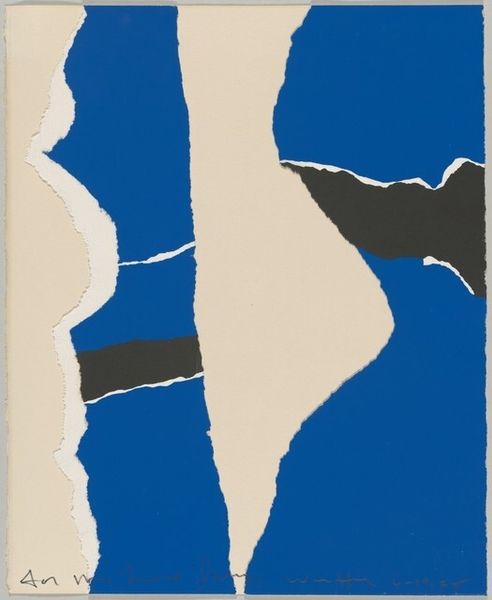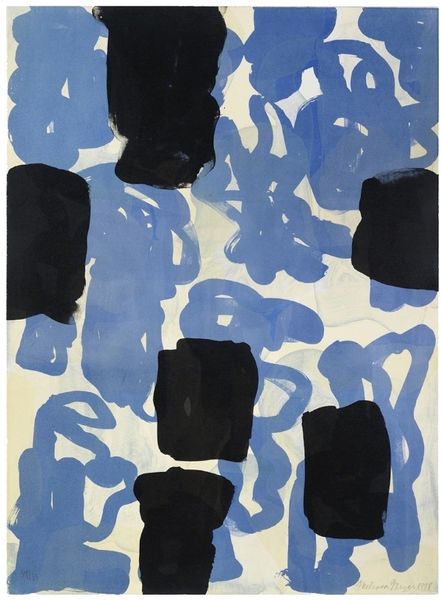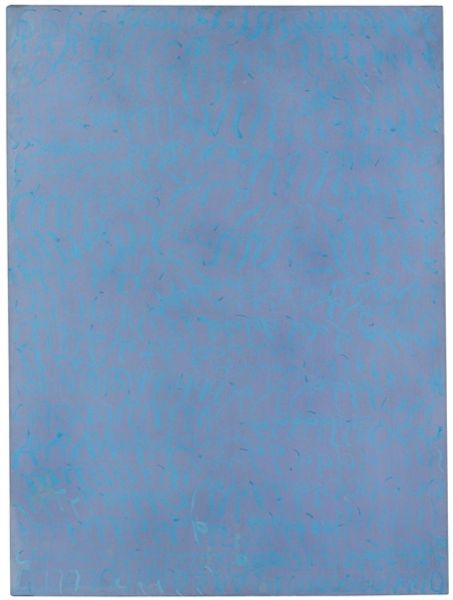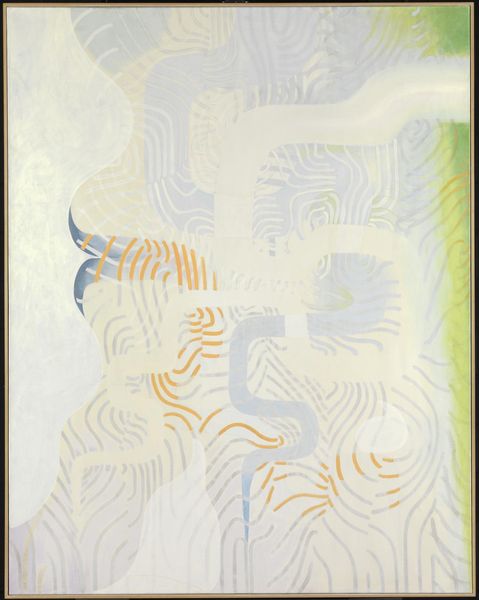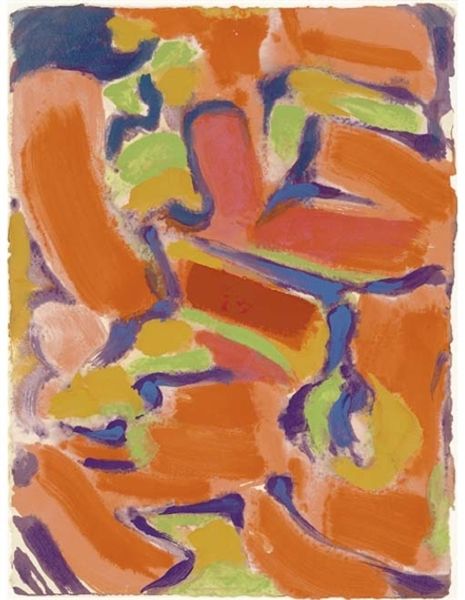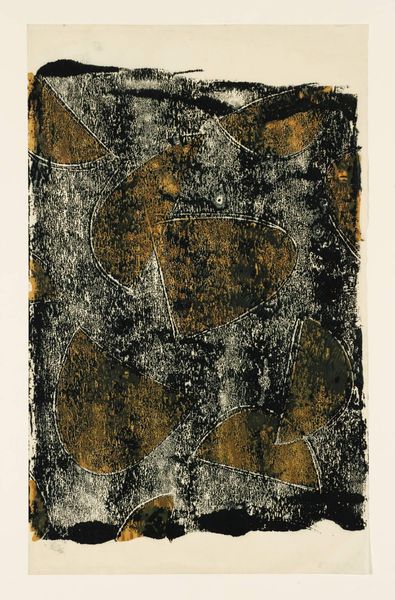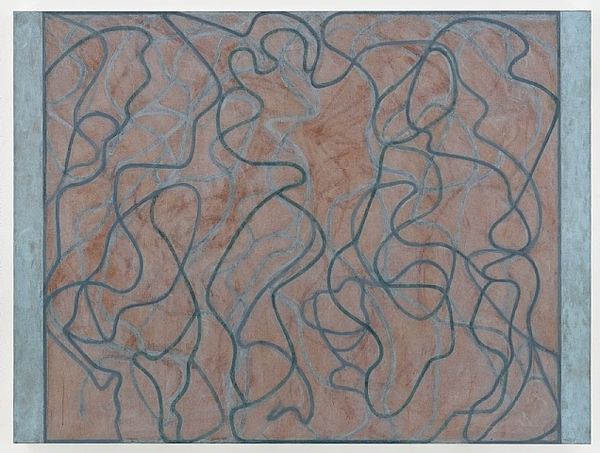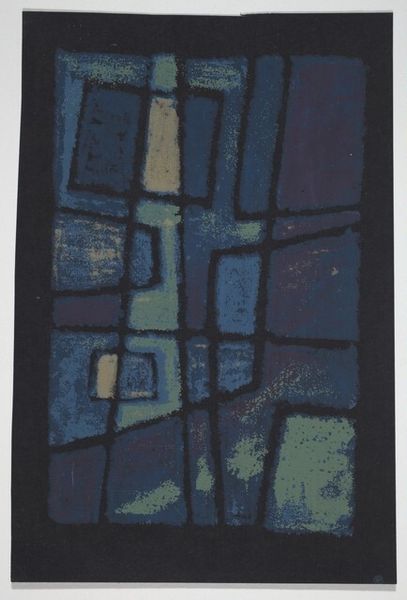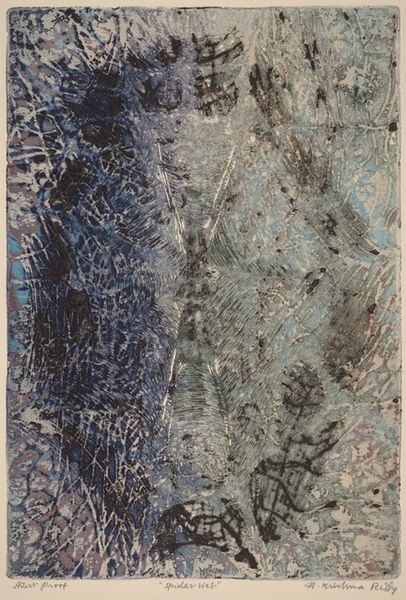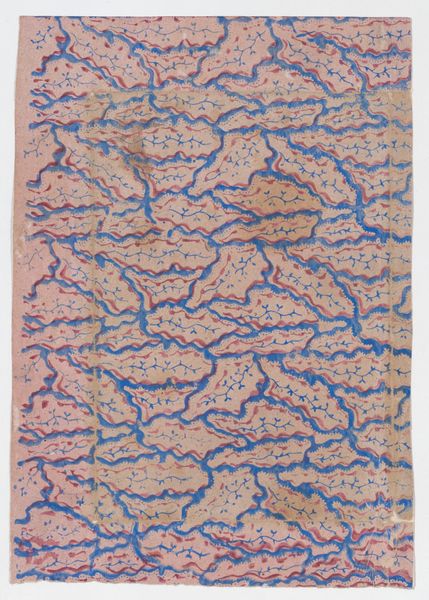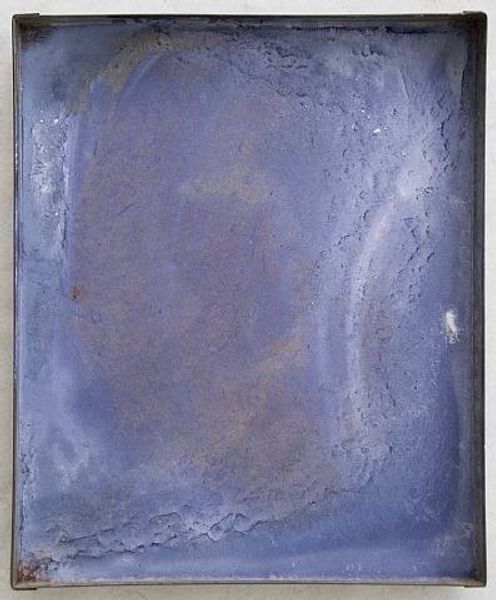
Copyright: Public Domain: Artvee
Curator: My initial impression is one of muted contemplation, a feeling of dusk settling in. There's a quiet energy despite the geometric underpinnings. Editor: Indeed. We are looking at Paul Klee’s "Late Evening Looking Out of the Woods," painted in 1937 using acrylic paint. He's really pushing the boundaries between abstraction and recognizable form here, isn't he? The painting displays layered abstract patterns. Curator: Absolutely. The dominant blue shapes remind me of standing at a window, the blurred world outside reduced to simplified forms, almost glyphs. Blue, psychologically, relates to the depth of feelings, intuition, and inner peace, making this piece very emotionally accessible. Editor: It’s intriguing to consider that Klee was painting this during a period of immense socio-political turmoil in Europe. How do you think that context informed his choice of these seemingly simple, organic yet structured shapes? There’s something very grounding about the palette. Curator: I suspect Klee was creating his own visual language to retreat from that very turmoil. These rounded geometric shapes possess symbolic weight. To me they conjure not just landscape, but something primal, almost cellular—a memory of nature's interconnectedness when everything outside was fracturing. Editor: That resonates with the history of abstract expressionism, finding universality amidst chaos. The layering could be seen as a representation of society: distinct, but always colored and shaped by what lies beneath. It also subtly reminds us that even what we perceive as untouched nature is inevitably layered with social influence. Curator: Exactly! Each color and form feels like a meditation. The way those cobalt blocks form a dense network feels like peering through something ancient. It embodies a cultural memory of forests, sacred groves perhaps. Editor: Ultimately, viewing "Late Evening Looking Out of the Woods", we see Klee grappling with his present while reflecting the staying power of imagery and memory. It causes us to ask questions regarding public spaces, personal identity, and emotional context. Curator: It makes me realize how art becomes its own window through history. Editor: Yes, it offers us, perhaps, another angle, into the interiority and experience of people.
Comments
No comments
Be the first to comment and join the conversation on the ultimate creative platform.
